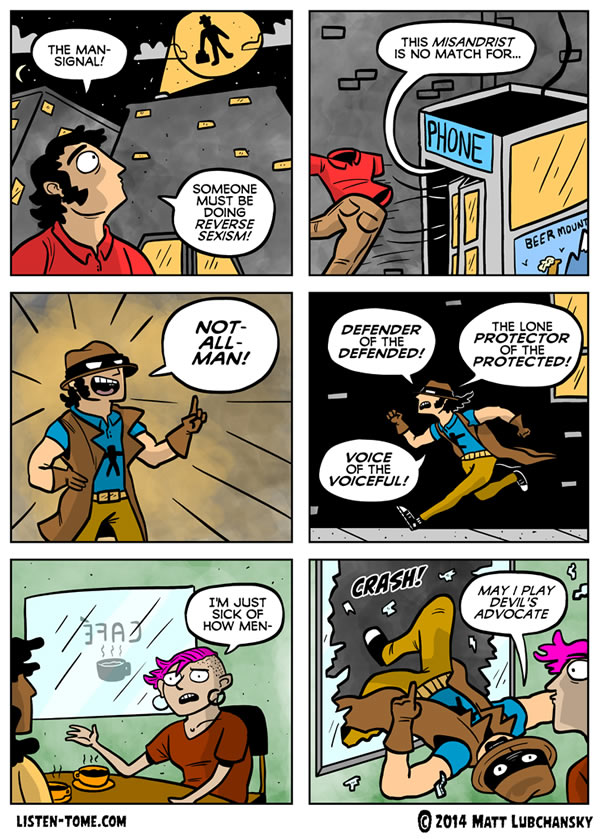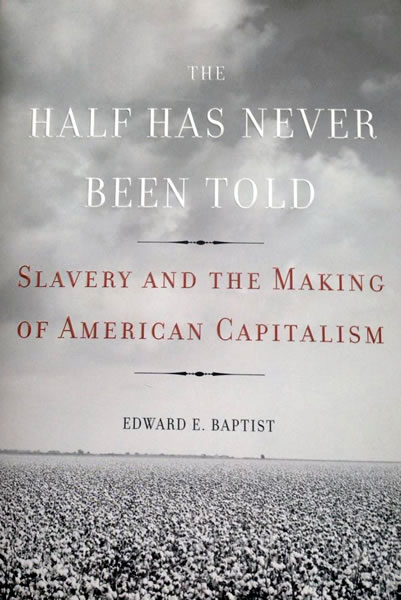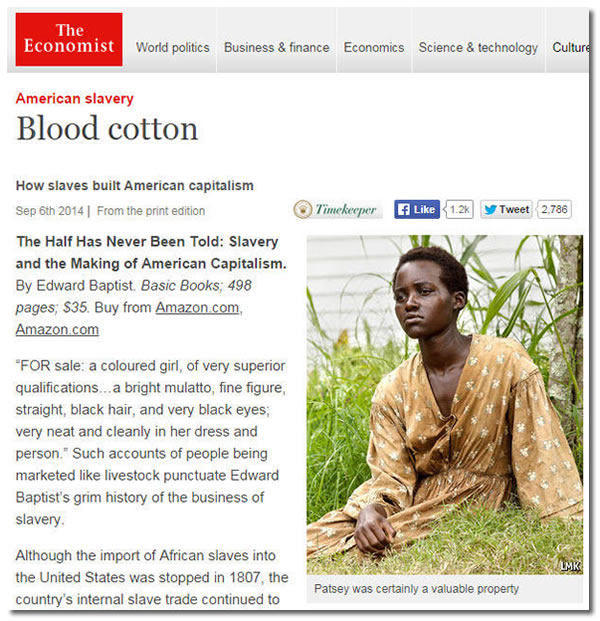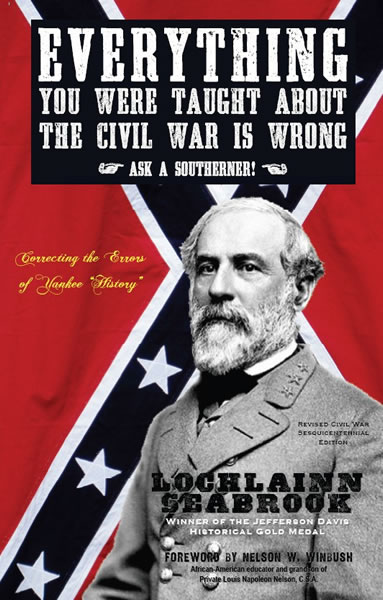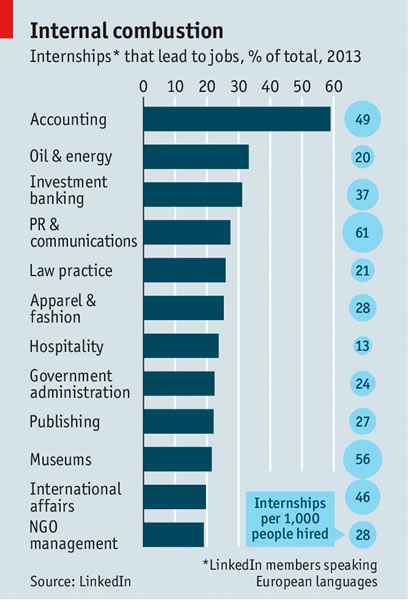
Yours Truly at a friend’s birthday party on Saturday night.
 I moved to Florida a mere six months ago, and you may be concerned with the ease with which I’m taking up the lifestyle. The accordion, as you might expect, has been a hit here — it’s helped me strike up more than a few friendships, including one with a local winemaker, not to mention some fans at a Clearwater strip bar (long story). I wear Aloha shirts often, and regularly go for a fortnight without putting on long pants. My mobile worker schedule allows me to enjoy a 10:30 a.m. swim break and an afternoon trip to the gym or a bike ride which typically includes a stop the local farmer’s market. There are swing dancing and shooting lessons in my future. I’m in a townhouse with a younger woman with whom I’m planning my second wedding at a beach resort. I have a perma-tan that would make George Hamilton jealous. And I have developed a fascination with a retirement community called The Villages.
I moved to Florida a mere six months ago, and you may be concerned with the ease with which I’m taking up the lifestyle. The accordion, as you might expect, has been a hit here — it’s helped me strike up more than a few friendships, including one with a local winemaker, not to mention some fans at a Clearwater strip bar (long story). I wear Aloha shirts often, and regularly go for a fortnight without putting on long pants. My mobile worker schedule allows me to enjoy a 10:30 a.m. swim break and an afternoon trip to the gym or a bike ride which typically includes a stop the local farmer’s market. There are swing dancing and shooting lessons in my future. I’m in a townhouse with a younger woman with whom I’m planning my second wedding at a beach resort. I have a perma-tan that would make George Hamilton jealous. And I have developed a fascination with a retirement community called The Villages.
The Villages sounds like a nickname, but it’s the actual name of a census-designated place located in central Florida, about 50 miles (80 km) northwest of Orlando and 77 miles (120 km) northeast of Tampa:

Last week, Forbes identified The Villages as the fastest-growing small city in America. Between 2010 and 2013, it doubled its population to nearly 110,000, most of whom are over the age of 55.

In a recent piece on BuzzFeed titled Club Meds (ha!), Alex French describes The Villages as:
“a notorious boomtown for boomers who want to spend their golden years with access to 11 a.m. happy hours, thousands of activities, and no-strings-attached sex, all lorded over by one elusive billionaire.”

“This is one of the fastest-growing small cities in America, a place so intoxicating that weekend visitors frequently impulse-purchase $200,000 homes,” writes French. “The community real estate office sells about 250 houses every month.”

“The grass is always a deep Pakistan green. The sunrises and sunsets are so intensely pink and orange and red they look computer-enhanced. The water in the public pools is always the perfect temperature. Residents can play golf on one of 40 courses every day for free.”

“Happy hour begins at 11 a.m. Musical entertainment can be found in three town squares 365 nights a year. It’s landlocked but somehow still feels coastal. There’s no (visible) poverty or suffering.”
“Free, consensual, noncommittal sex with a new partner every night is an option.”

“There’s zero litter or dog shit on the sidewalks and hardly any crime and the laws governing the outside world don’t seem to apply here.”
“You can be the you you’ve always dreamed of.”
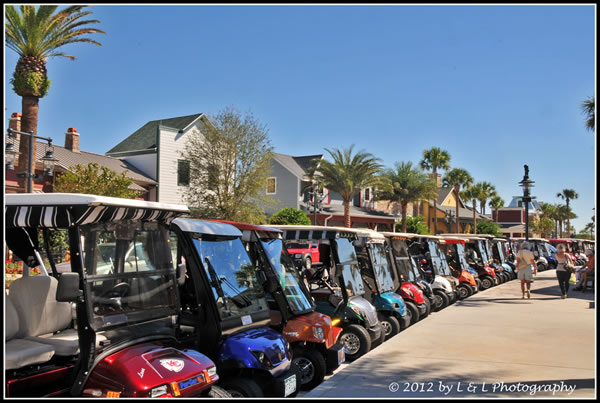
The first thing you’ll notice when you enter The Villages is that there are golf carts everywhere:

The place is designed to be a self-contained small town, so a car seems like overkill. If it were in Europe, you’d see more bikes, but this is America, dammit, and right after the rights to big portions of cheap food and assault rifle ownership comes the right to drive anywhere you damn well please.
That bit of social commentary out of the way, I have to say that the custom golf carts they’ve got there — some of which cost as much as $25,000 — are pretty cool, and I want one:

Since it’s the largest gated over-55 community in the world, life at The Villages is like an ongoing vacation with no shortage of activities. In Club Meds, French says that The Villages has over 2,200 “Resident Lifestyles Groups”, including “19 weekly opportunities for working with clay and 15 clogging groups”, a cheerleading club whose waiting list is two years long, a number of softball leagues, and unsurprisingly, “no fewer than 39 clubs devoted to line dancing”.
Fans of the old TV series The Prisoner, set in an isolated place called The Village, where ex-spies are expected to live out their days, will be amused that a CIA retirees group that meets on the second Thursday of every month.
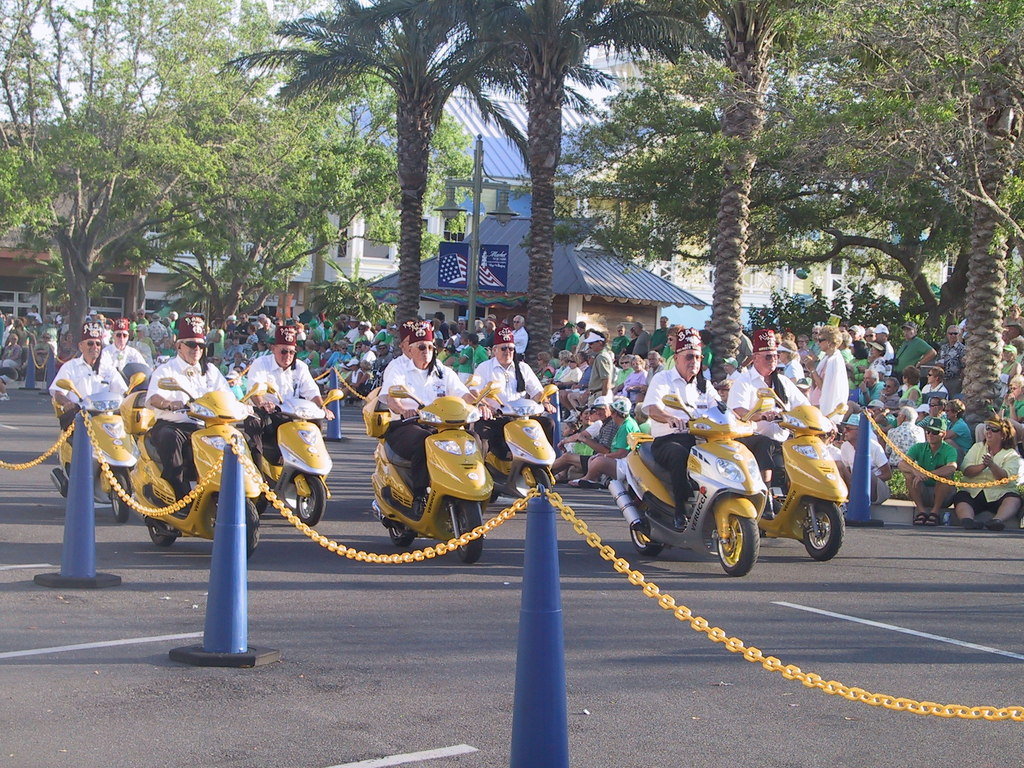
Click the photo to see it at full size.
In a piece published in Slate last year, Tampa Bay Times reporter Craig Pittman writes:
My buddy Jerry has parents who bought a home in the Villages 10 years ago. When Jerry visited his folks after they first moved in, the place creeped him out with its Stepford-like uniformity. “It was like Disney World for old people,” he said. Then about five years ago he started thinking of it as “a college campus for old people. It’s like an expensive party school.” (His dad drove one of the golf carts in the parade that made the Guinness book.) Now, he says, he thinks of it as being “like a landlocked cruise ship. It’s got everything you want to do, 16 hours a day. But then everything shuts down at 10 p.m.”

You’ve probably been asked this hypothetical question late into a party, gathering, or snuggle-fest with someone special, at that point when things get more contemplative: If you knew the world was going to end soon — perhaps tomorrow, in a week, a month or even in a year — what would you do? Many people start with the socially acceptable answer of “I’d spend time with the people I care about most”, but everyone eventually adds in “…and I’d totally cut loose and do what I’ve always wanted to do.”
If you live in The Villages, you’re answering that question every day. And if there’s something a lot of people have always wanted to do, it’s getting laid more. Here’s a key excerpt from Club Meds:
A waitress tells me about key parties at an Italian restaurant on Sumter Landing: “Golf cart keys get put in a fishbowl in the middle of the table, wives wait in the parking lot for their mystery dates.” I’m told about a prostitution ring that has recently been broken up. Orgies are said to be a regular occurrence. I am warned about women prowling around bars indiscriminately offering oral sex. There is reportedly a black market for Viagra. One of Bob’s buddies confesses to watching a couple fuck in a golf cart on a dead-end street. I’m told that sticking a loofah on your cart antenna signifies you’re into swinging. So does wearing a crimson button. According to multiple people, wearing gold shoes or letting your shirt tag stick out in the back signals you’re on the prowl. I hear a story about a scorned woman painting “YOU FUCKING PRICK YOU GAVE ME HERPES!” in red letters on her lover’s garage door. Recently, a married 68-year-old woman became a folk hero after getting arrested with a 49-year-old man for having sex in the square at Lake Sumter Landing. The cops brought her to jail and a Villages restaurant named a drink after her — Sex on the Square. It involves whipped cream and a cherry.
I couldn’t stop laughing at the bit about putting a loofah on your golf cart antenna as a signal that you’re up for some nookie. It reminds me of that Star Trek: The Next Generation episode where Captain Picard went to Risa, the vacation planet where carrying a tiki-like sculpture meant the same thing:

I also wondered how people there would interpret the antenna-topper currently on my car:

Back when I lived in Toronto, I was in a condo that seemed to be a mix of young couples and retirees (“newly-wed and nearly dead,” I used to quip). I was on a floor where most of the people were retirees, and that’s when I learned something about the fear of being along as you get older.
When my wife left me, I ended up in the hospital. The older folks on my floor, who generally called me “Jose”, “Joe”, or “Accordion Man”, found out through the grapevine. After I got home from the hospital, I found myself inundated with casserole dishes from my neighbors and feasted well on Polish, Ukrainian, and Yugoslav meat-and-potato meals for a month.
I winced with a little self-recognition at this passage in Club Meds:
Cork moved down here four years ago; we get to talking about his wife of 37 years and the day that she learned that she had cancer and was going to die. “She was here and then she was gone,” he says. After her death, he got lost. His two sons got him through it. He spent a few months up in Maryland working on his oldest son’s house. They finished a room over the garage — kitchen, plumbing, the whole kit and kaboodle. When they were done, Cork’s son asked him stay there for good. He wasn’t about to put himself out to pasture. He had to make a new life for himself. “We busted our asses for retirement. We saved. She died so suddenly and now I’m reaping the benefits of all that hard work and I feel so guilty.”
He wound up down here. “When I moved, a friend asks me, ‘How many fridges you got?’ I says, ‘Two.’ He says, ‘Once the ladies find out you’re unattached they’re going to start bringing casseroles!’” And they did.

Yours Truly in the hospital, January 2011.
I shouldn’t be here. If the super-flu I caught at the start of 2011 had done its job properly, you wouldn’t be reading this because I wouldn’t have been here to write it. Every moment from that time onwards is bonus time, and I live with that awareness every day. Maybe that’s why I get what the people in The Villages are up to.
That awareness is what led me to go on two dozen flights in 2011, move to Ottawa for the summer, start dating a lovely young lady in Florida, take a chance of starting a business with an old friend (now ex-friend) from high school, and pull up roots and start over in Tampa, and I’m still a decade away from being eligible to live in The Villages. The people who live there have retired, and live with daily reminders that there are likely fewer days ahead of them than behind them, and they’re living in the best way they know how. Given that it’s Florida, where no idea is a bad one, and that they have fewer reasons to worry about what other people will think than ever before, many of them are living large.
They’re all facing the question “How do I want to spend my final years?”, and some of their answers are spectacular.

There’s a lot more in the Club Meds article, and I recommend it for your Monday reading. In the spirit of The Villages and as an expression of my own philosophy, I’ll close with this little ditty from 1997:

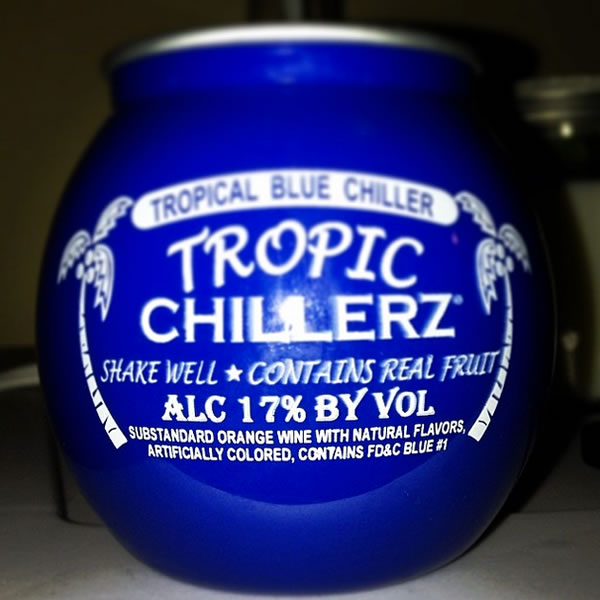



 I moved to Florida a mere six months ago,
I moved to Florida a mere six months ago,

















